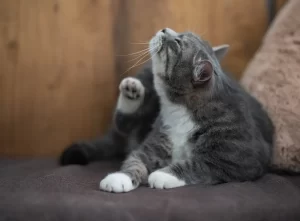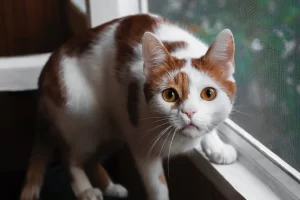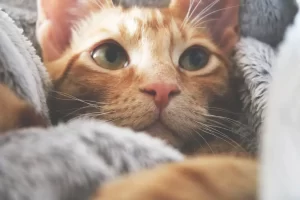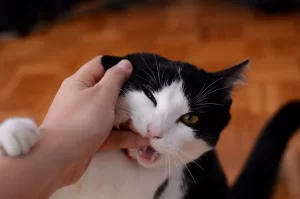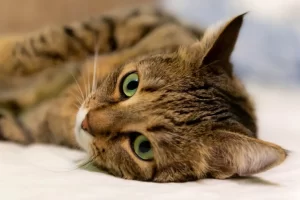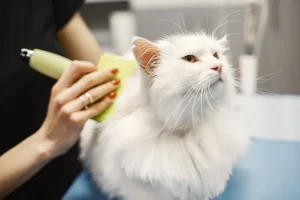If you’re a cat owner, it’s important to know how to treat a cat wound. Cats are curious animals that often get into scrapes and cuts, and knowing how to properly care for their wounds can help prevent infections and ensure that they heal quickly and safely. While serious or deep wounds should always be examined by a veterinarian, there are many simple steps you can take at home to care for minor wounds on your cat. In this article, we’ll cover the most important things you need to know about how to treat a cat wound at home, including supplies and equipment you’ll need, how to safely clean and dress the wound, signs that indicate the wound needs professional attention, and much more. By following these guidelines, you can help your cat recover from their injury and get back to their normal happy and healthy self.
Table of Contents
ToggleEssential Supplies and Equipment for Treating Your Cat’s Wounds at Home
The following are some of the supplies and equipment you may need when treating a cat wound at home:
- Latex gloves or other protective gloves
- Scissors or clippers for cutting hair around the wound
- Clean towels or gauze pads for cleaning and drying the wound
- Sterile saline solution or clean water for cleaning the wound
- Mild antiseptic solution or ointment for treating the wound
- Non-adhesive bandages or gauze pads for covering the wound
- Adhesive tape or bandage wraps for securing the bandage in place
- Elizabethan collar (also called e-collar or cone) to prevent the cat from licking or biting the wound
- Tweezers for removing foreign objects from the wound
- Styptic powder or cornstarch to stop bleeding (if the wound is bleeding excessively)
Always have these supplies and equipment ready before beginning wound treatment to avoid any delay or interruptions during the process. Additionally, make sure all supplies are clean and sterile to prevent further infection.
How to Restrain a Cat for Wound Treatment?
Restraint is necessary to ensure both the cat’s and the person’s safety during wound treatment. Here are some tips for safely restraining a cat for wound treatment:
- Use a towel or blanket: Place a towel or blanket over the cat’s head and body, leaving only the wound exposed. This can help keep the cat calm and prevent scratches or bites.
- Hold the cat gently but firmly: Use your non-dominant hand to grasp the scruff of the cat’s neck, which can help immobilize the cat. Place your other hand over the cat’s back or hold the cat’s body against your chest.
- Avoid applying excessive pressure: Do not squeeze or hold the cat too tightly, as this can cause discomfort or injury.
- Consider using a cat restraint bag or carrier: If the cat is particularly fractious or difficult to handle, consider using a cat restraint bag or carrier to restrain the cat safely during wound treatment.
Remember that cats can become agitated or anxious when restrained, so always approach the situation calmly and with care. If the cat becomes too agitated or distressed, it may be necessary to take a break and try again later or seek professional veterinary care.
How to Clean a Cat Wound?
Cleaning the wound properly is an important step in preventing infection. Here are the steps for cleaning a cat wound:
- Put on protective gloves: Wear protective gloves to avoid contamination and reduce the risk of infection.
- Trim the hair around the wound: Use scissors or clippers to trim the hair around the wound. This helps to prevent hair from getting into the wound and interfering with the healing process.
- Clean the wound with sterile saline solution or clean water: Use a syringe or spray bottle to flush the wound with sterile saline solution or clean water. This helps to remove dirt, debris, and bacteria from the wound.
- Apply an antiseptic solution or ointment: After cleaning the wound, apply a mild antiseptic solution or ointment to the wound. This helps to kill any remaining bacteria and promote healing.
- Cover the wound: Cover the wound with a non-adhesive bandage or sterile gauze pad. This helps to protect the wound from further contamination and allows it to heal properly.
- Monitor the wound: Check the wound regularly for signs of infection or other complications. Contact a veterinarian if you notice any swelling, discharge, or signs of pain or discomfort.
Always wash your hands thoroughly after treating a cat wound to prevent the spread of infection. If the wound appears deep, large, or infected, seek veterinary care immediately.
How to Stop Bleeding in a Cat Wound?
If a cat wound is bleeding, there are several methods that can be used to stop the bleeding. Here are some ways to stop bleeding in a wound:
- Apply direct pressure: Apply firm pressure to the wound with a clean towel or gauze pad. This helps to slow down or stop bleeding by promoting clotting.
- Use a styptic powder or cornstarch: If the bleeding is from a nail or small cut, applying a small amount of styptic powder or cornstarch can help stop the bleeding.
- Elevate the wound: If the wound is on a limb, elevate the limb above the heart level to reduce blood flow to the area and slow down the bleeding.
- Apply ice: Applying a cold compress or ice pack to the wound can help constrict blood vessels and reduce bleeding.
- Use a tourniquet: In rare cases of severe bleeding, a tourniquet may be necessary to stop the bleeding. This should only be used as a last resort and should be applied by a professional or under veterinary supervision.
If the bleeding does not stop or if the wound is deep, large, or located in a sensitive area, seek veterinary care immediately. Remember to always apply gentle pressure and handle the cat with care to avoid causing further injury or distress.
When to Use Antiseptic Solutions or Ointments on Cat Wound
Antiseptic solutions or ointments can be used for wound care to help prevent infection and promote healing. Here are some guidelines on when to use antiseptic solutions or ointments for wound care:
- Use antiseptics for cleaning the wound: Antiseptic solutions or ointments can be used to clean the wound and prevent infection. Use a mild antiseptic solution or ointment after flushing the wound with saline solution or clean water.
- Use antiseptics for minor wounds: Antiseptic solutions or ointments can be used for minor wounds that do not require veterinary care. These include small cuts, scrapes, or minor injuries.
- Use antiseptics for wounds that are not healing: If a wound is not healing or appears infected, an antiseptic solution or ointment may be necessary to promote healing and prevent further infection.
- Do not use antiseptics for deep or serious wounds: Antiseptic solutions or ointments should not be used for deep or serious wounds, as these require professional veterinary care. Using antiseptics on a deep or serious wound may delay proper treatment and increase the risk of infection.
Follow the instructions on the antiseptic solution or ointment and apply it sparingly to avoid irritation or adverse reactions. If you are unsure whether to use an antiseptic solution or ointment, or if the wound is deep or serious, seek veterinary care immediately.
How to Bandage a Cat Wound
Applying and changing dressings or bandages is an important part of wound care for cats. Here is a step-by-step guide and instructions on how to apply and change dressings or bandages for wound care:
- Put on protective gloves: Wear protective gloves to avoid contamination and reduce the risk of infection.
- Prepare the wound: Clean the wound as directed by your veterinarian or following the previous steps outlined above. Ensure the wound is dry before applying a new dressing.
- Choose the appropriate dressing: Select the appropriate dressing based on the size and location of the wound. Non-adhesive bandages or sterile gauze pads are recommended.
- Cut the dressing to size: Cut the dressing to the appropriate size to cover the wound. Ensure the dressing is large enough to extend beyond the wound to provide adequate coverage.
- Apply the dressing: Place the dressing over the wound and secure it in place with adhesive tape or bandage. Ensure the bandage is snug but not too tight as it can restrict blood flow.
- Change the dressing regularly: Change the dressing at least once a day, or as directed by your veterinarian. Ensure to check the dressing for any signs of leakage, discharge, or odors.
- Remove the old dressing: Gently remove the old dressing, taking care not to disturb the wound or cause pain.
- Clean the wound: Clean the wound as directed by your veterinarian or following the previous steps outlined above.
- Apply a new dressing: Apply a new dressing as described in steps 3 to 5.
- Secure the dressing: Secure the dressing in place with adhesive tape or bandage. Monitor the cat for signs of discomfort or irritation from the dressing.
How to Know if the Cat Wound is Healing or Worsening
It is important to monitor a cat’s wound for signs of healing or worsening to ensure proper wound care and prevent complications. Here are some guidelines on how to monitor a wound:
- Observe the wound daily: Monitor the wound daily for any changes in appearance, size, color, or discharge. Record any changes and report them to your veterinarian.
- Check for signs of infection: Look for signs of infection, including redness, swelling, warmth, discharge, or odor. If any of these signs are present, seek veterinary care immediately.
- Check for signs of healing: Look for signs of healing, including scabbing, new skin growth, and reduced discharge. These are indications that the wound is healing well.
- Monitor the cat’s behavior: Observe the cat’s behavior for signs of pain, discomfort, or lethargy. If the cat is displaying any of these signs, seek veterinary care immediately.
- Keep the wound clean and dry: Ensure the wound is kept clean and dry. If the dressing becomes wet or dirty, change it immediately.
- Follow the veterinarian’s instructions: Follow your veterinarian’s instructions regarding wound care, medication, and follow-up appointments. They may also advise you on how to monitor the wound and when to seek veterinary care.
If you notice any changes in the wound, or if the cat is displaying signs of pain or discomfort, seek veterinary care immediately. Early intervention can prevent complications and promote proper wound healing.
When to See a Vet for a Cat Wound
While some minor wounds can be treated at home, certain wounds require professional medical attention. Here are some signs that indicate a cat wound requires veterinary care:
- Bleeding that does not stop after applying pressure for 10-15 minutes.
- Deep wounds that penetrate the skin or muscle.
- Wounds that are longer than one inch or wider than 1/4 inch.
- Wounds that are located near the eyes, ears, or other sensitive areas.
- Wounds that are infected, with redness, swelling, discharge, or a foul odor.
- Lacerations caused by animal bites or puncture wounds.
- Wounds that are near a joint or bone, as they can affect mobility and cause further damage.
- Signs of pain or discomfort, such as limping, reluctance to move, or vocalization.
- Cats that are elderly, have chronic health conditions, or are immune-compromised, as they are at a higher risk of complications from wound infections.
How to Prevent a Cat From Licking or Scratching the Wound
Preventing a cat from licking or scratching at a wound is essential to ensure proper wound healing and prevent infection. Here are some ways to prevent a cat from licking or scratching at a wound:
- Use an Elizabethan collar: An Elizabethan collar (also known as a “cone of shame”) can prevent a cat from accessing the wound. The collar should fit comfortably around the cat’s neck, and you should supervise the cat when they wear it.
- Use a wound cover: A wound cover can protect the wound from the cat’s licking and scratching. There are several types of wound covers available, including wraps, socks, and shirts. Ensure the wound cover fits snugly but comfortably around the cat’s body.
- Use bitter apple spray: Bitter apple spray can be applied to the wound or surrounding area to discourage the cat from licking or scratching. The spray has a bitter taste that cats find unpleasant.
- Provide distractions: Provide the cat with distractions, such as toys or puzzles, to redirect their attention from the wound.
- Keep the cat calm: Stress and anxiety can cause a cat to lick or scratch at a wound. Keep the cat calm by providing a quiet and comfortable environment.
Monitor the cat closely to ensure they do not lick or scratch at the wound. If the cat continues to lick or scratch, seek veterinary care immediately as this can lead to complications and delay proper wound healing.
Cat Wound Recovery: The Role of Diet and Nutrition
Diet and nutrition play a crucial role in wound healing for cats. Proper nutrition can help support the immune system, promote tissue repair, and enhance overall healing. Here are some key considerations when it comes to diet and nutrition for cats with wounds:
- Adequate protein intake: Protein is essential for tissue repair and wound healing. It is important to ensure that your cat’s diet contains sufficient amounts of high-quality protein. This can be found in animal-based protein sources such as chicken, fish, and turkey.
- Vitamin C and E: Vitamins C and E are important antioxidants that help protect cells from damage and promote healing. Foods such as spinach, kale, and broccoli are rich in vitamin C, while vitamin E can be found in sources such as almonds, sunflower seeds, and sweet potatoes.
- Essential fatty acids: Omega-3 and omega-6 fatty acids play a vital role in reducing inflammation and promoting skin and tissue health. These can be found in fish oil, flaxseed oil, and certain types of fish.
- Hydration: Proper hydration is essential for overall health and wound healing. Make sure your cat has access to clean, fresh water at all times.
- Avoid sugary and processed foods: Sugary and processed foods can weaken the immune system and slow down the healing process. Avoid feeding your cat processed or sugary foods and instead opt for whole, unprocessed foods.
Frequently Asked Questions About Cat Wounds
Cat Wound Healing Stages
The healing process of a cat wound can be divided into several stages. Here are the typical stages of cat wound healing:
- Hemostasis: This stage occurs immediately after the wound occurs and involves the body’s natural clotting mechanisms to stop bleeding.
- Inflammatory phase: This stage occurs within the first few hours after the wound occurs and involves the body’s immune response to remove any debris and prevent infection. During this stage, the wound may appear red, swollen, and painful.
- Proliferative phase: This stage typically begins within 3-5 days after the wound occurs and involves the production of new tissue to fill the wound. Blood vessels begin to grow into the wound to provide oxygen and nutrients to the healing tissue.
- Maturation phase: This stage can last for several months and involves the remodeling of the new tissue to restore the skin’s strength and function. The wound will typically appear flat and light in color during this stage.
Keep in mind that the speed and success of wound healing can vary based on several factors, including the size and location of the wound, the cat’s overall health and immune system function, and the quality of wound care.
What are Cat Wound Sprays and How to Use Them?
Cat wound sprays are topical solutions that are designed to aid in the healing of minor wounds and skin irritations in cats. They typically contain antiseptic agents, such as chlorhexidine or povidone-iodine, that help to prevent infection and promote healing.
Cat wound sprays can be used to clean and disinfect minor wounds, such as cuts, scratches, and abrasions. They can also be used to help relieve pain and inflammation associated with minor skin irritations. However, it is important to note that deep or severe wounds should always be evaluated and treated by a veterinarian.
Here are some common types of cat wound sprays:
- Antiseptic sprays: These sprays contain antiseptic agents that help to prevent infection and promote healing. They can be used to clean and disinfect minor wounds.
- Pain relief sprays: These sprays contain ingredients such as lidocaine or benzocaine that help to relieve pain and discomfort associated with minor skin irritations.
- Moisturizing sprays: These sprays are designed to hydrate and moisturize the skin, which can help to promote healing and prevent dryness and itching.
When using a cat wound spray, it is important to follow the instructions on the label carefully. This may include cleaning the wound with a sterile saline solution or water before applying the spray. It is also important to avoid getting the spray in the cat’s eyes, nose, or mouth. If your cat experiences any adverse reactions, such as swelling or redness, after using a wound spray, discontinue use and contact your veterinarian.
What Can I Put on a Cat Wound?
The type of treatment to put on a cat wound will depend on the severity and location of the wound. Here are some common options and instructions for treating cat wounds:
- Saline solution: A saline solution can be used to clean and irrigate minor wounds. Mix one teaspoon of salt with one pint of warm water and use a syringe or clean cloth to gently clean the wound.
- Hydrogen peroxide: Hydrogen peroxide can be used to clean minor wounds, but should be used with caution as it can damage healthy tissue. Dilute the hydrogen peroxide with an equal amount of water and apply it to the wound with a clean cloth or syringe.
- Antiseptic ointments: Antiseptic ointments, such as Neosporin or Polysporin, can be applied to minor wounds to help prevent infection and promote healing. Apply a small amount of the ointment to the wound, and cover it with a sterile dressing if needed.
- Silver sulfadiazine cream: This cream is often used for deeper wounds or burns, as it has antibacterial and anti-inflammatory properties. Apply a thin layer of the cream to the wound, and cover it with a sterile dressing if needed.
- Honey: Raw, organic honey can be applied to minor wounds to help promote healing and prevent infection. Apply a small amount of the honey to the wound and cover it with a sterile dressing.
It is important to note that some treatments, such as hydrogen peroxide, can be harmful to healthy tissue and should only be used on minor wounds.
Cat Wound on Neck: What Can I Do?
If your cat has a wound on their neck, it is important to evaluate the severity of the wound and seek veterinary attention if necessary.
Minor wounds can be cleaned with saline solution and treated with antiseptic ointments or honey. Apply a small amount of the treatment to the wound and cover it with a sterile dressing if needed.
However, if the wound is deep or appears to be severe, it may require veterinary attention. Deep wounds on the neck can be dangerous as they may affect the cat’s airway or vital blood vessels. Additionally, if the wound appears to be infected or if your cat is showing signs of pain or discomfort, seek veterinary attention immediately.
Can I Put Neosporin on a Cat Wound?
Neosporin is an over-the-counter antiseptic ointment that is commonly used to treat minor wounds in humans. It contains a combination of antibiotics (neomycin, polymyxin B, and bacitracin) that work together to prevent and treat bacterial infections.
While Neosporin can be used on cats, it is important to use it with caution and only under the guidance of a veterinarian. Cats may have an allergic reaction to the antibiotic ingredients in Neosporin, and it can be toxic if ingested or used on deep wounds or large areas of skin.
If your veterinarian approves the use of Neosporin on your cat’s wound, here are some instructions for use:
- Clean the wound with saline solution or hydrogen peroxide, if recommended by your veterinarian.
- Dry the wound thoroughly with a clean cloth or sterile gauze.
- Apply a small amount of Neosporin to the wound using a clean cotton swab or your finger.
- Cover the wound with a sterile dressing or bandage, if recommended by your veterinarian.
What Ointment Can I Put on a Cat Wound?
There are several ointments that can be used to treat minor wounds in cats, but it’s important to check with your veterinarian before applying any topical treatments to your cat’s wound. Some of the commonly used ointments for cat wounds include:
- Triple antibiotic ointment: This ointment contains a combination of antibiotics, including neomycin, polymyxin B, and bacitracin, and is used to prevent and treat bacterial infections.
- Silver sulfadiazine cream: This cream contains an antibacterial agent and is commonly used to treat burns and other skin wounds in cats.
- Hydrogel dressings: These dressings are moist and can help to soothe and protect the wound. They can also help to promote wound healing and prevent infection.
- Aloe vera gel: This natural ointment can be used to soothe the skin and promote wound healing. It has anti-inflammatory properties and can help to reduce redness and swelling.
Cat Wound Won’t Heal: Why and What to Do
If your cat’s wound isn’t healing, there can be several reasons why. Here are a few possible causes:
- Infection: If the wound is infected, it may not heal properly. Signs of infection include redness, swelling, discharge, and a foul odor. If you suspect your cat’s wound is infected, it’s important to seek veterinary attention right away.
- Underlying health issues: Certain health issues, such as diabetes or a weakened immune system, can affect a cat’s ability to heal properly. If your cat has an underlying health issue, it’s important to work with your veterinarian to manage the condition and promote healing.
- Poor nutrition: A cat’s diet can play a role in wound healing. If your cat isn’t getting the proper nutrition, it may take longer for the wound to heal. Make sure your cat is eating a balanced diet that is appropriate for their age and health needs.
- Excessive movement or licking: If your cat is constantly moving or licking at the wound, it may prevent it from healing properly. It’s important to keep your cat calm and restrict their movement as much as possible.
If your cat’s wound isn’t healing, it’s important to seek veterinary attention. Your veterinarian can assess the wound, determine the underlying cause, and recommend the appropriate treatment plan. This may include antibiotics, topical treatments, or other therapies to promote healing.
cat wound smells like death: Why?
If your cat’s wound smells like death, has a foul odor or the cat wound is turning black, it’s likely a sign of a serious bacterial infection. The odor is caused by the release of gases from the bacteria that are infecting the wound. This type of infection is known as necrotizing fasciitis, and it can be life-threatening if left untreated.
Necrotizing fasciitis is a rapidly spreading infection that can destroy the tissues and muscles around the wound. It can also cause sepsis, which is a severe infection that can lead to organ failure and death. It’s important to seek veterinary attention immediately if your cat has a wound that smells bad, as this may be a sign of necrotizing fasciitis.
Your veterinarian will likely perform a physical examination of your cat and may take a sample of the wound for bacterial culture and sensitivity testing. Treatment for necrotizing fasciitis typically involves aggressive antibiotic therapy, wound care, and supportive care to manage any complications. In severe cases, surgical debridement may be necessary to remove the dead tissue and stop the spread of the infection.
How to Clean a Cat Wound With Salt Water?
Cleaning a cat wound with salt water can be a simple and effective way to prevent infection and promote healing. Here’s how you can do it:
- First, wash your hands thoroughly with soap and warm water to avoid introducing any additional bacteria to the wound.
- Prepare the salt water solution by mixing 1 teaspoon of salt into 1 cup of warm water. Make sure the salt is completely dissolved.
- Gently clean around the wound with a clean cloth or gauze soaked in the salt water solution. Be careful not to touch the wound directly with the cloth or gauze, as this can cause further damage and introduce bacteria.
- If the wound is open, use a syringe or bulb syringe to flush the salt water into the wound. This can help remove any dirt or debris and prevent infection.
- After cleaning the wound, pat the area dry with a clean towel or gauze. Avoid rubbing the area, as this can cause further irritation.
How to Disinfect a Cat Wound
Disinfecting a cat wound is an important step in preventing infection and promoting healing. Here are some steps to disinfect a cat wound:
- Clean the wound: Before disinfecting, it’s important to clean the wound with mild soap and warm water. Gently remove any debris or dirt from the wound.
- Choose a disinfectant: There are several disinfectants that can be used to disinfect a cat wound, including hydrogen peroxide, povidone-iodine, and chlorhexidine. It’s important to choose a disinfectant that is safe for cats and to follow the instructions carefully.
- Dilute the disinfectant: If using a concentrated disinfectant, dilute it according to the instructions provided. Most disinfectants require dilution with water before use.
- Apply the disinfectant: Use a clean, sterile applicator such as a cotton ball or gauze to apply the disinfectant to the wound. Be careful not to touch the wound directly with your hands or the applicator, as this can introduce bacteria.
- Allow the disinfectant to work: Let the disinfectant sit on the wound for the recommended amount of time, as specified on the product label. This will ensure that the disinfectant has enough time to kill any bacteria present.
- Rinse the wound: After the recommended amount of time has passed, rinse the wound with sterile saline solution or warm water to remove any remaining disinfectant.
- Dry the wound: Use a clean, dry cloth or gauze to gently pat the wound dry. Avoid rubbing or putting pressure on the wound, as this can cause further irritation.
Remember that disinfecting a cat wound is not a substitute for veterinary care. If the wound is deep, bleeding heavily, or shows signs of infection, it’s important to seek veterinary attention right away.
How to Remove Maggots from Cat Wound at Home
It is not recommended to remove maggots from a cat wound at home. Maggots can be a sign of a serious wound infection, and removing them without proper medical attention can cause further harm to the cat.
If you suspect that your cat has maggots in a wound, it’s important to seek veterinary care right away. Your veterinarian can assess the wound, remove the maggots safely, and provide appropriate treatment to address the underlying infection and promote healing.
Attempting to remove maggots at home can also be dangerous for the person performing the removal, as maggots can carry harmful bacteria and can potentially cause an infection in humans. Therefore, it’s important to leave the removal of maggots to trained professionals.
Can You Put Vaseline on a Cat Wound?
It is not recommended to use Vaseline on a cat wound. Vaseline is a petroleum-based product that can trap bacteria and moisture in the wound, which can interfere with the healing process and increase the risk of infection.
Instead of Vaseline, there are other safe and effective options for treating cat wounds, such as using a pet-safe wound ointment or spray recommended by a veterinarian
Coconut Oil on Cat Wound: Would it Help?
It is not recommended to use coconut oil on a cat wound. While coconut oil is safe for cats to ingest in small amounts, it is not an appropriate wound treatment for cats.
Coconut oil is not an antiseptic and does not have any antibacterial properties, so it may not effectively prevent or treat infections in a wound. Additionally, applying coconut oil to a wound may actually make it more difficult for the wound to heal, as it can trap bacteria and other debris in the wound.
Can You Put Aquaphor on a Cat Wound?
It is not recommended to use Aquaphor on a cat wound. Aquaphor is a product that is designed for human use, and its safety and efficacy in treating cat wounds have not been established.
Instead of using Aquaphor, it’s best to use a pet-safe wound ointment or spray that has been specifically formulated for use in cats. These products are designed to help promote healing, prevent infection, and reduce the risk of complications.


